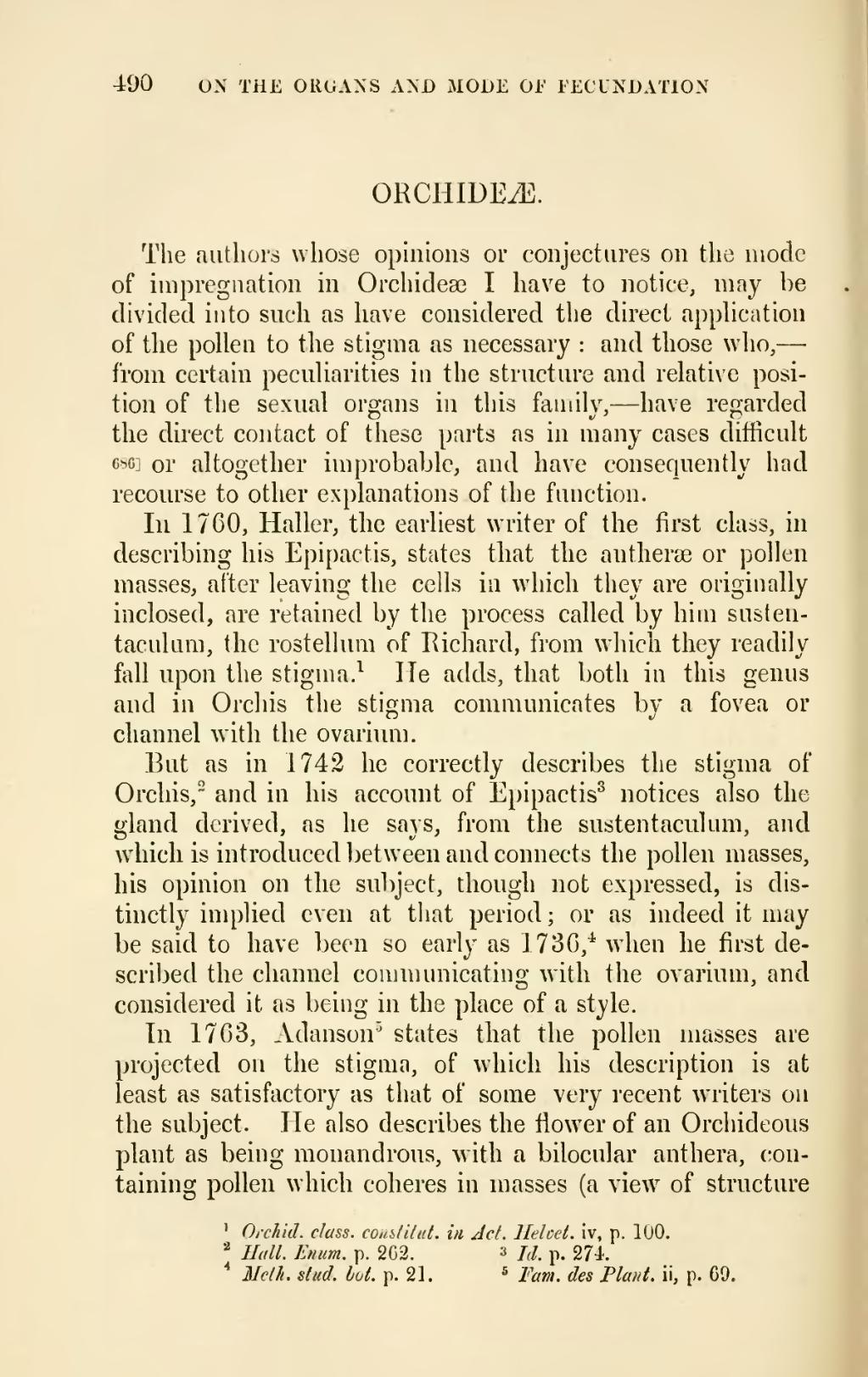ORCHIDEÆ.
The authors whose opinions or conjectures on the mode of impregnation in Orchideæ I have to notice, may be divided into such as have considered the direct application of the pollen to the stigma as necessary: and those who,—from certain peculiarities in the structure and relative position of the sexual organs in this family,—have regarded the direct contact of these parts as in many cases difficult 686] or altogether improbable, and have consequently had recourse to other explanations of the function.
In 1760, Haller, the earliest writer of the first class, in describing his Epipactis, states that the antheræ or pollen masses, after leaving the cells in which they are originally inclosed, are retained by the process called by him sustentaculam, the rostellum of Richard, from which they readily fall upon the stigma.[1] He adds, that both in this genus and in Orchis the stigma communicates by a fovea or channel with the ovarium.
But as in 1742 he correctly describes the stigma of Orchis,[2] and in his account of Epipactis[3] notices also the gland derived, as he says, from the sustentaculum, and which is introduced between and connects the pollen masses, his opinion on the subject, though not expressed, is distinctly implied even at that period; or as indeed it may be said to have been so early as 1736,[4] when he first described the channel communicating with the ovarium, and considered it as being in the place of a style.
In 1763, Adanson[5] states that the pollen masses are projected on the stigma, of which his description is at least as satisfactory as that of some very recent writers on the subject. He also describes the flower of an Orchideous plant as being monandrous, with a bilocular anthera, containing pollen which coheres in masses (a view of structure
